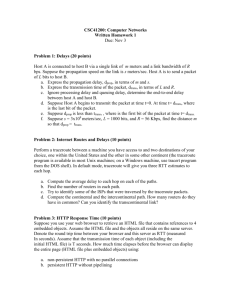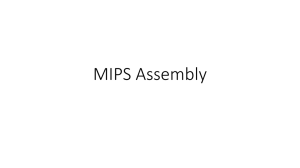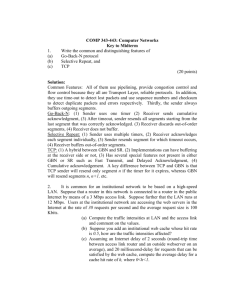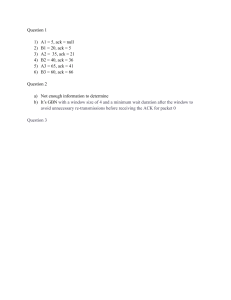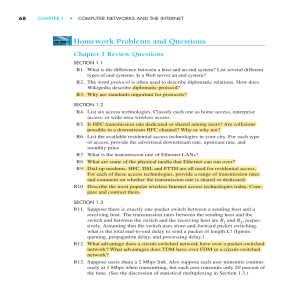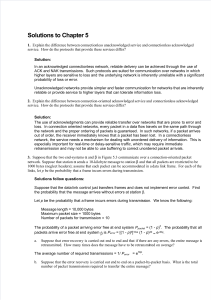CNT 4704: Analysis of Computer Communication Networks Assigned Oct. 9
advertisement
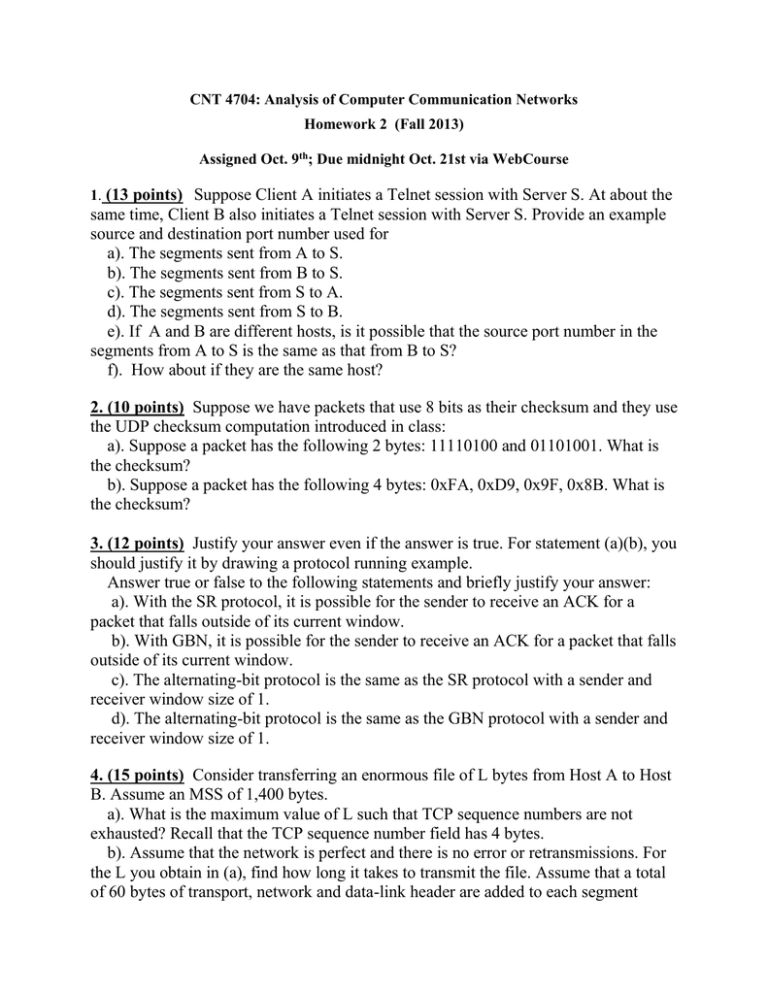
CNT 4704: Analysis of Computer Communication Networks Homework 2 (Fall 2013) Assigned Oct. 9th; Due midnight Oct. 21st via WebCourse 1. (13 points) Suppose Client A initiates a Telnet session with Server S. At about the same time, Client B also initiates a Telnet session with Server S. Provide an example source and destination port number used for a). The segments sent from A to S. b). The segments sent from B to S. c). The segments sent from S to A. d). The segments sent from S to B. e). If A and B are different hosts, is it possible that the source port number in the segments from A to S is the same as that from B to S? f). How about if they are the same host? 2. (10 points) Suppose we have packets that use 8 bits as their checksum and they use the UDP checksum computation introduced in class: a). Suppose a packet has the following 2 bytes: 11110100 and 01101001. What is the checksum? b). Suppose a packet has the following 4 bytes: 0xFA, 0xD9, 0x9F, 0x8B. What is the checksum? 3. (12 points) Justify your answer even if the answer is true. For statement (a)(b), you should justify it by drawing a protocol running example. Answer true or false to the following statements and briefly justify your answer: a). With the SR protocol, it is possible for the sender to receive an ACK for a packet that falls outside of its current window. b). With GBN, it is possible for the sender to receive an ACK for a packet that falls outside of its current window. c). The alternating-bit protocol is the same as the SR protocol with a sender and receiver window size of 1. d). The alternating-bit protocol is the same as the GBN protocol with a sender and receiver window size of 1. 4. (15 points) Consider transferring an enormous file of L bytes from Host A to Host B. Assume an MSS of 1,400 bytes. a). What is the maximum value of L such that TCP sequence numbers are not exhausted? Recall that the TCP sequence number field has 4 bytes. b). Assume that the network is perfect and there is no error or retransmissions. For the L you obtain in (a), find how long it takes to transmit the file. Assume that a total of 60 bytes of transport, network and data-link header are added to each segment before the resulting packet is sent out over a 10Mbps link. Ignore flow control and congestion control so A can pump out the segments back to back and continuously. 5. (20 points) TCP congestion control: 6. (15 points) Consider the cross-country example shown in lecture notes Chapter3part2.ppt (page 9-12). How big would the window size have to be for the channel utilization to be greater than 80 percent? 7.(15 points) TCP duplex communication: Suppose the TCP packet transmission between host A and host B (or a client and a server) follow the following scenarios, fill in the missing sequence number and ack number.
